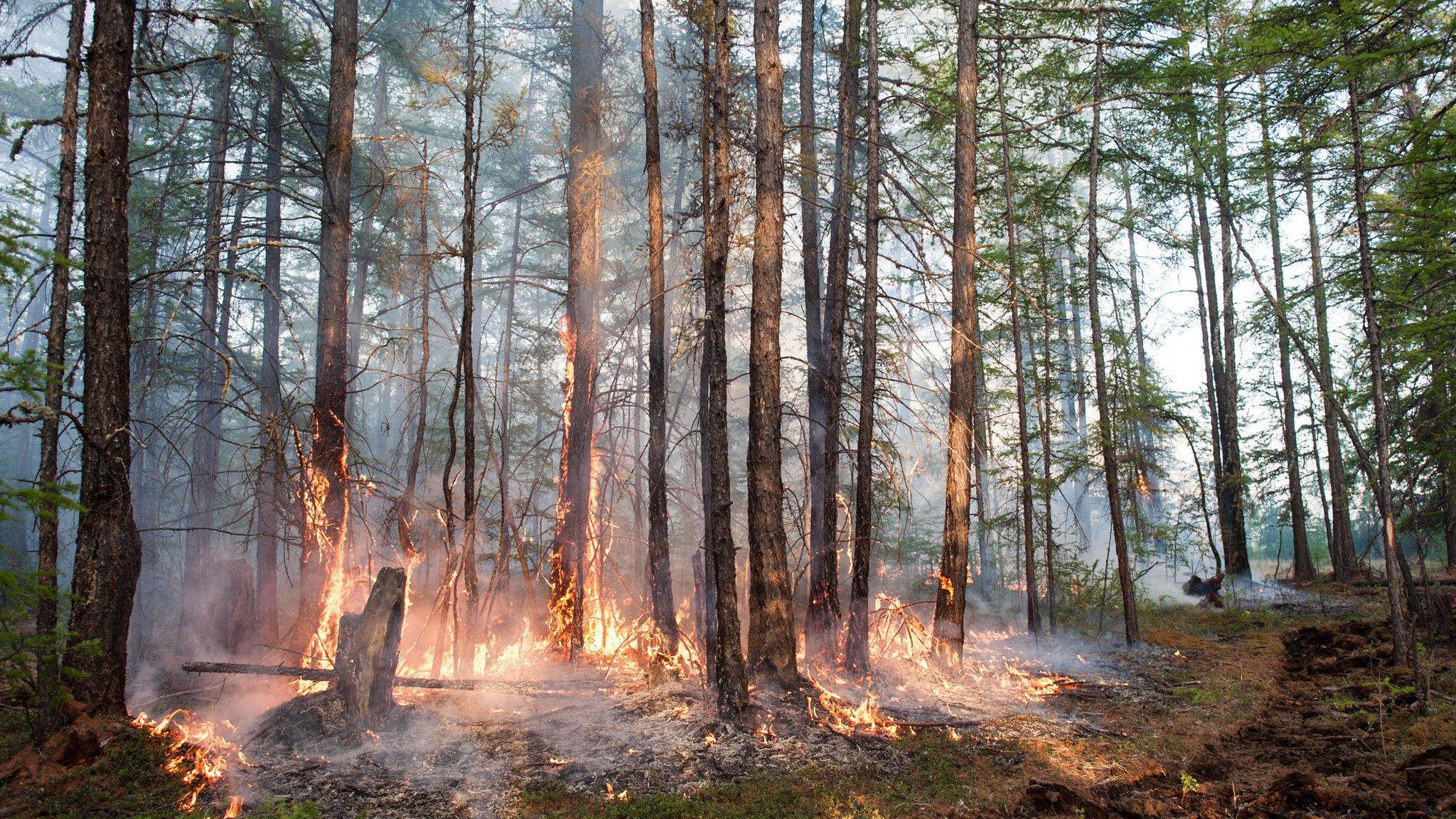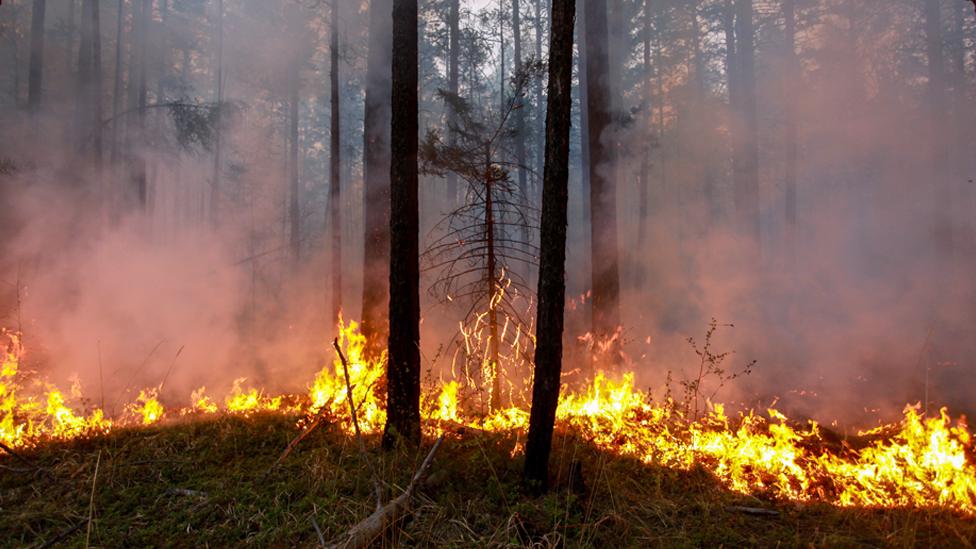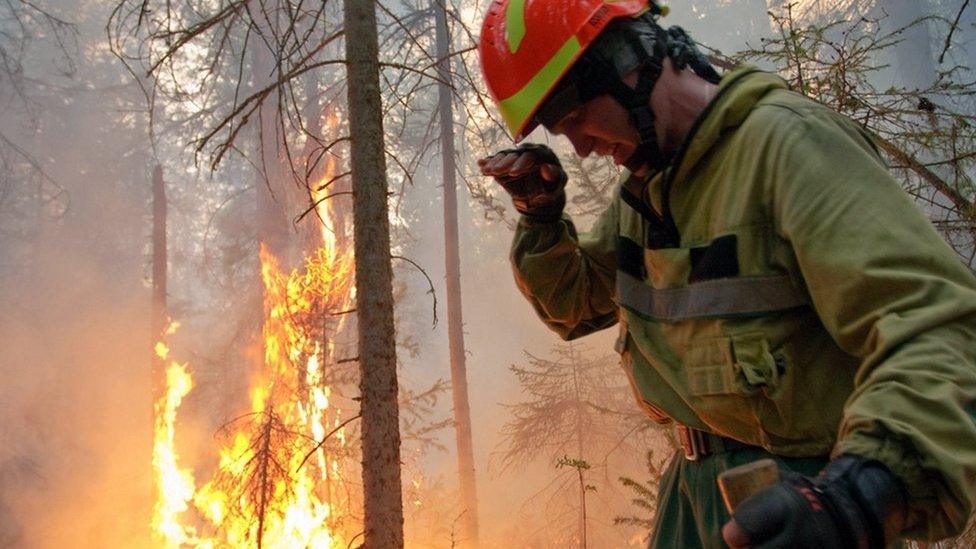Siberian Arctic 'up to 10 degrees warmer' in June
- Published
The BBC's Steve Rosenberg travels to the forest to see how Russians tackled 2019's wildfires
Temperatures in the Siberian Arctic reached record averages in June, with some areas seeing rises of as much as 10C (18F), according to EU data.
Scientists say the heat has helped fan wildfires in the region, resulting in the unprecedented estimated release of 59m tonnes of carbon dioxide.
Hot summer weather is not uncommon in the Arctic Circle, but recent months have seen abnormally high temperatures.
The Arctic is believed to be warming twice as fast as the global average.
Carlo Buontempo, director of the European Union's earth observation programme, the Copernicus Climate Change Service, said the trend was "worrisome".
Copernicus scientists say the region saw an average rise of 5C. That is more than a degree higher than the previous two warmest Junes on record - in 2018 and 2019.
One Siberian town, Verkhoyansk, reached a high of 38C on 20 June - 18C higher than the average maximum daily temperature for the month. The record is still to be verified.

Wildfires have been made more severe by high temperatures and strong winds in the Arctic
Earlier in June, parts of Siberia recorded 30C, while in May, Khatanga in Russia - situated in the Arctic Circle at 72 degrees north - set a new May temperature record of 25.4C.
Meanwhile, some 246 fires covering more than 1,400 sq km (540 sq miles) had been recorded in the region as of 6 July, according to the Russian forestry agency.
The two issues are related, according to Mark Parrington, a senior scientist at Copernicus.
"Higher temperatures and drier surface conditions are providing ideal conditions for these fires to burn and to persist for so long over such a large area," he told news agency Reuters.

How worried should we be?

When you ask climatologists about the latest record-breaking temperatures or other extreme weather events around the world they tend to respond with a resigned sigh.
"It is in line with predictions of global warming going back decades now," Professor Martin Siegert, of Imperial College London, says of these exceptional Arctic temperatures. "We don't really need further confirmation of this problem but here it is anyway."
He believes we should be very worried by events like this.
"What happens in the Arctic doesn't stay in the Arctic," Professor Siegert tells me.
It is one of the key drivers of global weather systems, he says. So, if you change the weather in the Arctic you are likely to see the effects ripple out around the world.
The problem is that climate scientists simply don't know for certain what those effects are likely to be.
The climate models suggest they will lead to more extreme weather events - heatwaves and severe storms.
"What we do know is that the Arctic is warming at least twice as fast as the rest of the world,' Professor Siegert says.
"That means change is definitely on the way."
- Published22 June 2020

- Published2 August 2019

- Published4 August 2019
